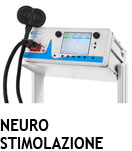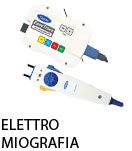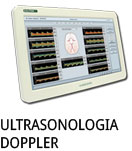- +39 011 5821948
- info@geasoluzioni.it
- Lun - Ven 8:00 - 17:30
Parkinson’s Disease and Motor Function. A Validation of the PLM Method
- Abstract:
- To validate the Posturo-Locomotor-Manual (PLM) test, an objective movement measurement system designed to measure movement disability in patients with Parkinsonism. Method: The reliability of the PLM test was determined in a test-retest procedure performed in 37 healthy controls (Study III). Correlations between the PLM test and clinical ratings with the Unified Parkinson’s Disease Rating Scale motor section (UPDRS III) were investigated in 73 patients with Parkinsonism (47 with Parkinson’s disease, 17 with multiple system atrophy, and 9 with progressive supranuclear palsy) who performed the PLM test and underwent UPDRS III rating in simultaneous assessments (Study II). The ability of the PLM test to discriminate between healthy controls and patients with Parkinsonism, between patients with Parkinson’s disease and patients with atypical Parkinsonism, and between patients with multiple system atrophy and patients with progressive supranuclear palsy was evaluated in 132 patients (56 with Parkinson’s disease, 53 with multiple system atrophy, and 23 with progressive supranuclear palsy) using multiple logistic regression analysis (Study III). To ensure that the accuracy of the original semiautomatic PLM method was maintained in a new automatic implementation, QbTestMotus, the old and new test methods were performed simultaneously in 61 patients and the correlation between the two techniques was analyzed (Study I). Finally, the PLM test was used in parallel with UPDRS III in a clinical pilot trial evaluating the effect of repetitive transcranial magnetic stimulation in 10 patients with early Parkinson’s disease (Study IV). Results: The PLM test had excellent test-retest reliability and discriminated effectively between healthy persons and patients with Parkinsonism (AUC 0.99). There was a fair to good correlation between the PLM test and UPDRS III in all measured variables except for the manual variable (M). The ability of the PLM test to discriminate between PD patients and patients with atypical Parkinsonism was improved (to AUC=0.91) by combining two PLM variables. There was a good coherence between the original semiautomatic PLM test and the QbTestMotus. UPDRS III ratings indicated that repetitive transcranial magnetic stimulation over the motor cortex potentiated the medication effect in the 10 patients with early Parkinson’s disease, but this effect was not detectable using the PLM test. Conclusion: The automated implementation of the PLM test (QbTestMotus) generates data that are consistent with the measurements made with an older semi-automated method. The PLM test is a reliable and objective instrument for measuring motor function in ambulatory patients with Parkinsonism. It can distinguish between Parkinson's disease and atypical Parkinsonism in patients at intermediate to advanced stages of the disease, but cannot reliably detect acute treatment response in early-stage Parkinson's disease with symptoms predominantly from the upper limbs.
- Patologie/Applicazioni:
- Anno:
- 2013
- Tipo di pubblicazione:
- Articolo
- Parola chiave:
- parkinson; riabilitazione motoria
Hits: 2056
La nostra storia
GEA soluzioni si affaccia nel 2013 al mercato della strumentazione medicale di alto livello tecnologico ma la sua storia parte da più lontano, clicca qui per approfondire.
GEA SOLUZIONI SRL
via Issiglio 95/10, Torino
Tel.: 011 5821948 / 011 4463853
Fax: 011 0433281
Email: info @ geasoluzioni.it
P. IVA IT11696920013
REA TO1233648










